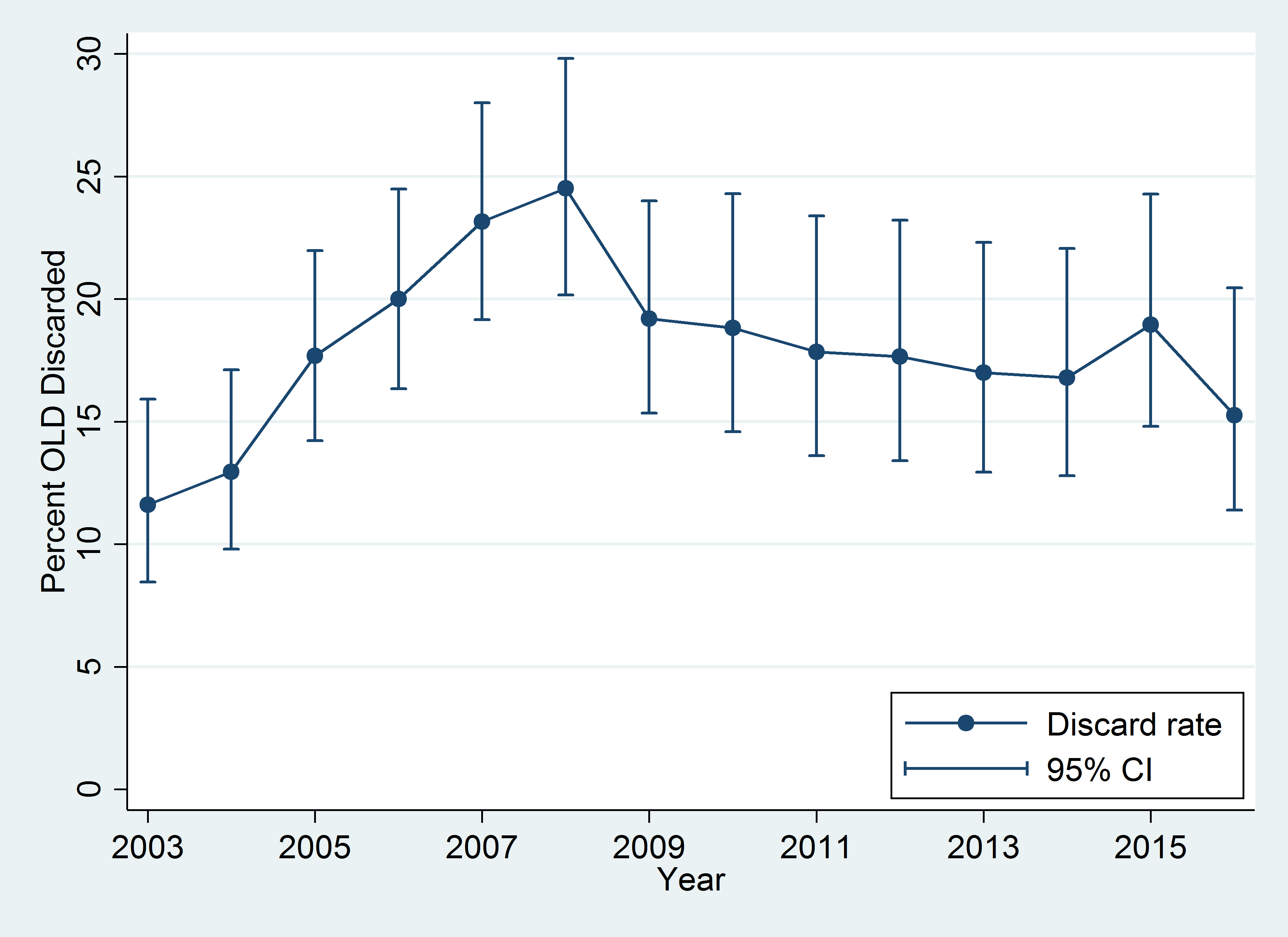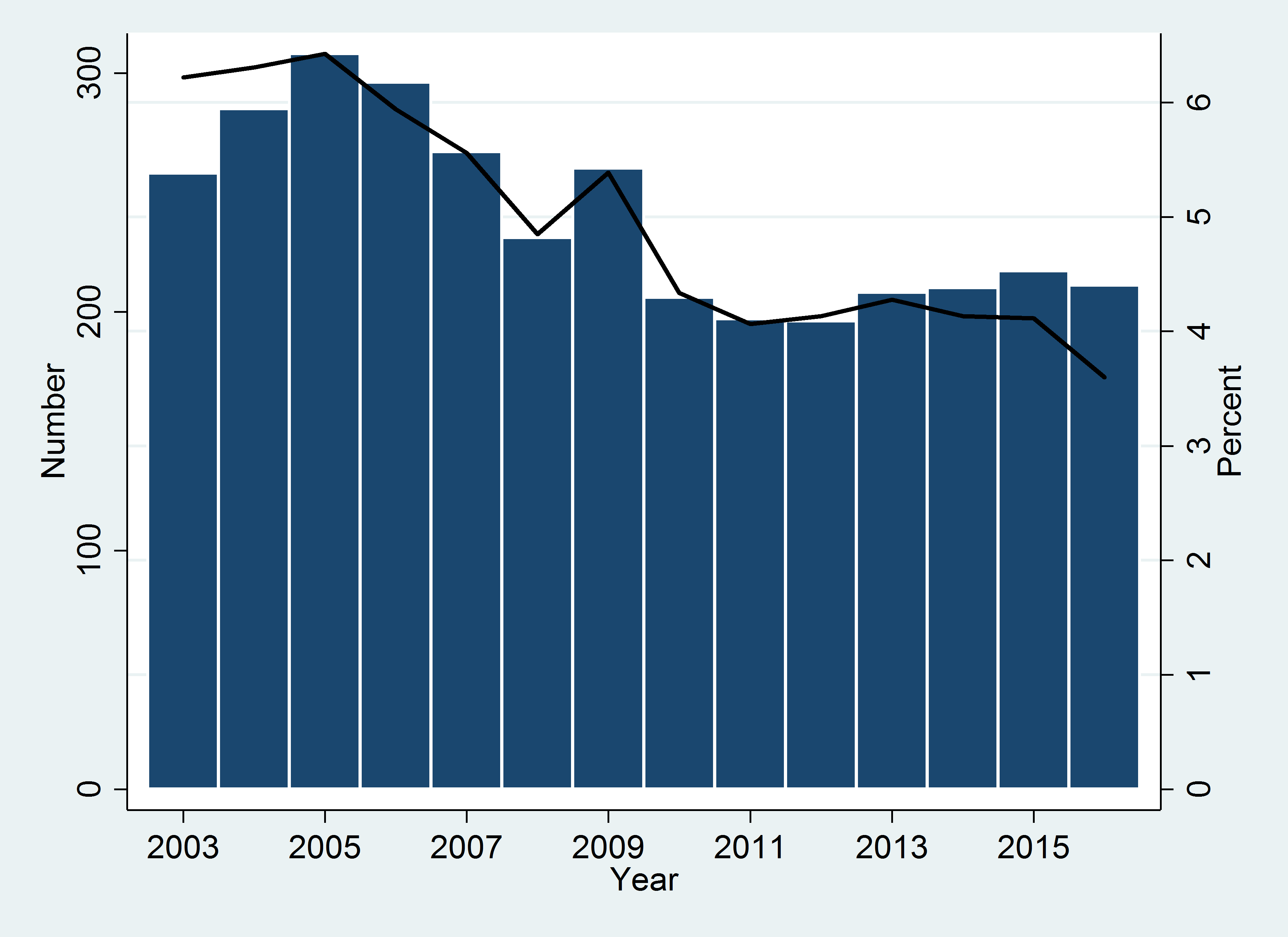Trends in Transplantation with Older Liver Donors in the United States
Christine Haugen1, Xun Luo1, Alvin G Thomas 1, Courtenay M Holscher1, Jacqueline Garonzik-Wang 1, Mara McAdams-DeMarco 1,2, Dorry L Segev1,2.
1Surgery , Johns Hopkins Hospital, Balitmore, MD, United States; 2Epidemiology , Johns Hopkins Bloomberg School of Public Health , Baltimore, MD, United States
As the United States population ages, older liver donors (OLDs) represent a potential expansion of the donor pool. Historically, grafts from OLDs have been associated with poor outcomes and higher rates of discard. We sought to evaluate trends in demographics, discard, and outcomes of OLDs.
Methods: We identified 4127 OLDs (aged≥70) and 3350 liver-only OLD graft recipients using data from the Scientific Registry of Transplant Recipients in the United States (1/1/2003-12/31/2016). We studied temporal changes in OLD graft characteristics, utilization, and recipient characteristics. Modified Poisson regression was used to estimate the annual discard rate. Cuzick test of trend was used to compare changes in OLD transplants performed over the study period. Kaplan-Meier methods were also used to create unadjusted cumulative incidence curves of mortality and all-cause graft loss. Cox proportional hazards models were used to estimate mortality and graft loss for OLD graft recipients.
Results: From 2003 to 2016, the discard of OLDs increased from 11.6% to 15.4% with the highest discard rate in 2008 at 24.5%. Discarded OLDs were more likely to become younger (74.3 years in 2013-2016 vs. 75.6 years in 2003-2006, p=0.004), have a higher BMI (28.7 vs. 26.7, p=0.008), and less likely to be Caucasian (73.7 vs. 80.8, p=0.03). Since 2003 the percentage of OLD transplants performed out of all adult liver transplants has decreased from 6.0% to 3.2% (p=0.001). The average age of OLD recipients increased from 55.9 years in 2003 to 59.8 years in 2016 (p<0.001). Since 2003, the indication for liver transplant in recipients of OLD grafts has changed. OLD recipients became more likely to have non-alcoholic steatohepatitis (16.9% in 2013-2016 vs 4.1% in 2003-2006) or HCC (22.6% vs 10.6%) as their indication for LT. Also, the average cold ischemia time decreased from 7.7 hours in 2003-2006 to 5.7 hours in 2013-2016 (p<0.001). Graft and patient survival for OLD graft recipients improved since 2003: OLD graft recipients from 2013-2016, mortality was 60% lower (aHR:0.40,95%CI:0.31-0.52,p<0.001) and all-cause graft loss was 55% lower (aHR:0.45,95%CI:0.36-0.57,p<0.001) than between 2003-2006.
Conclusion: Up to 25% of OLDs are discarded annually across the US, and the number of OLD transplants performed has decreased. However, there is a significant improvement in graft and patient survival for OLD recipients since 2003. Particularly in the setting of an aging population, these trends in improved outcomes can guide OLD use and decrease OLD discard to possibly expand the donor pool.




National Institutes of Health .
